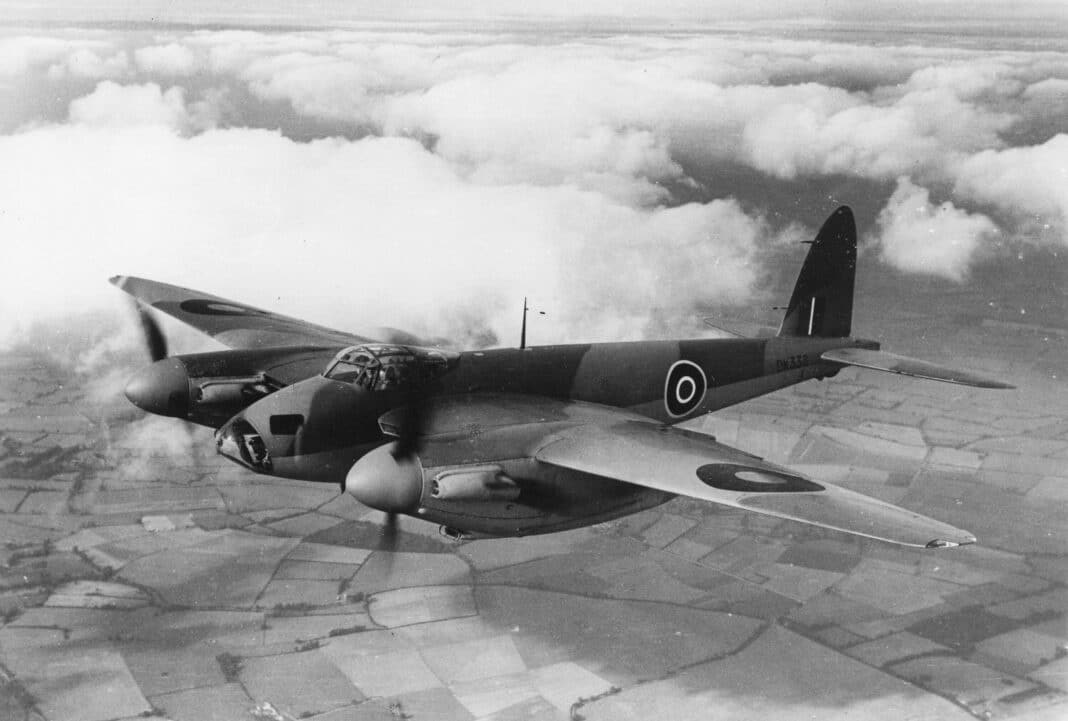The uses of timber are varied, surprising, practical and, of course, sustainable in a zero-net carbon world. But a wooden military airplane!
Well, there was the De Havilland Mosquito, otherwise known as the DH98 Mosquito, which graced the skies 83 years ago!
It was the fastest fighter-bomber of World War II.
In September 1939, Sir Geoffrey de Havilland believed his company could produce a twin-engine bomber that would need little defensive equipment because of its outstanding performance.
Built by experienced cabinet makers, it used a “sandwich” system that was typical of pre-war construction. The ply-balsa-ply monocoque fuselage and one-piece wings with doped fabric covering would provide excellent aerodynamic performance, low weight, and strength and stiffness.
The new plane was known amongst pilots as “the Wooden Wonder”.
“Originally conceived as a high-flying, unarmed photo-reconnaissance aircraft, the Mosquito saw service in wide-ranging roles from bomber / fight-bomber to Might- fighter to Anti-shipping strike, trainer, torpedo bomber and even as a target tug.”
The role that the Mossie became best at was low-level target bombing. The Mosquito was used in the “Dambusters Raid” as the aircraft where the pilots practised low-level flying. The Mosquito is sometimes called the unsung hero of World War II. It proved to be the most versatile of all aircraft in the War.
The first prototype flew in November 1940, and the second prototype in June 1941. At the time, it was one of the fastest operational aircraft in the world. During trials in January 1941, the prototype outpaced a Vickers Supermarine Spitfire.
The “Wooden Wonder” was commissioned into the RAF in 1941.
The Mosquito’s speed was not only the result of its lack of exterior drag but also of its lighter wooden frame and plywood skin and of its propulsion by two Rolls Royce Merlin engines.
Because of its speed, it was initially designed and used as a reconnaissance aircraft. And, for a while, it was the fastest aircraft in the sky, only passed by the later versions of the Spitfire and the German Messerschmitt ME262 jet fighter.
The Mosquito could carry a similar bomb load as the huge American Boeing B17, which was about the same size as the British Lancaster bomber.
In total, the number of Mosquitoes constructed between 1940 and 1950 totalled 7,781—and whilst the major production was carried out in Britain by de Havilland Aircraft Company, Airspeed, the Standard Motor Company, and the Percival Aircraft, planes were also constructed here in Australia by de Havilland Australia.
The Mosquito saw glory in several operations, the most famous being Operation Jericho on 18th February 1944.
During that battle, the Mosquito FB.VI bombers, operating out of RAF Hunsdon in Hertfordshire, attacked the German-held prison at Amiens on the edge of the Somme Valley.
Their skilful airmanship delivered low-level waves of bombs, first destroying the outer and inner prison walls, quickly followed by the guard house. A total of 255 allied prisoners escaped through the breaches in the buildings and walls, although sadly, 182 were soon recaptured.
On another occasion, a daylight Mosquito attack knocked out the main Berlin Broadcasting Station on the very day Herman Göring was giving a speech to celebrate the 10th anniversary of the Nazis’ seizing power.






